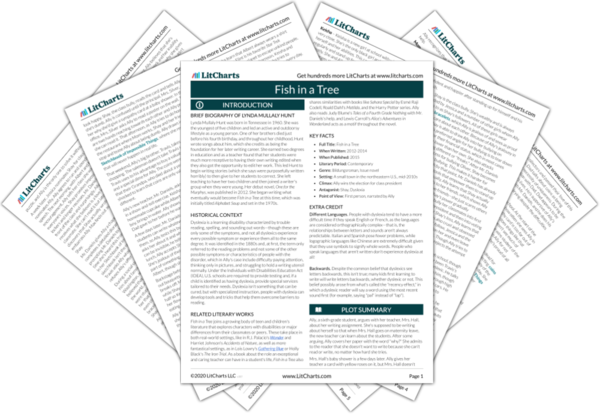Mr. Daniels's saying introduces the idea that a person must be celebrated for the things that they do well, or all they'll focus on is the things they do poorly. In Ally's case, this means that her drawing and her abilities at math haven't been celebrated enough, while all the focus has been on her failure to grasp written language—which, taken together, makes her feel dumb.
